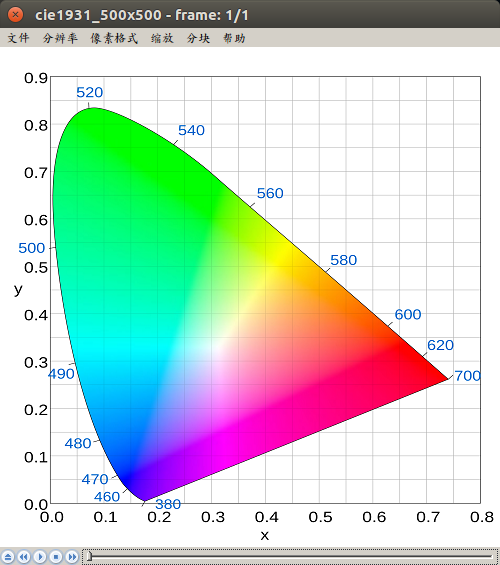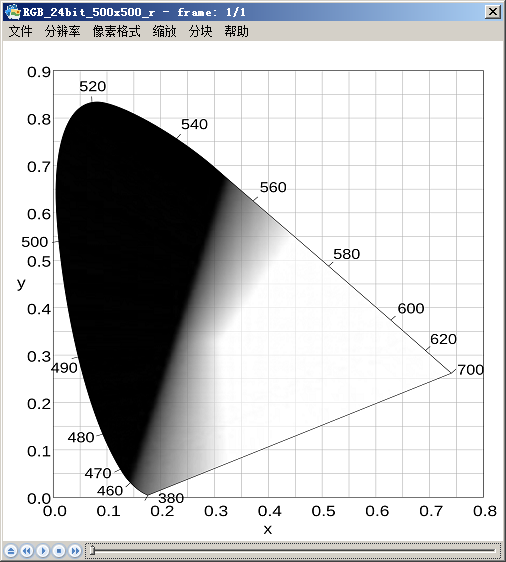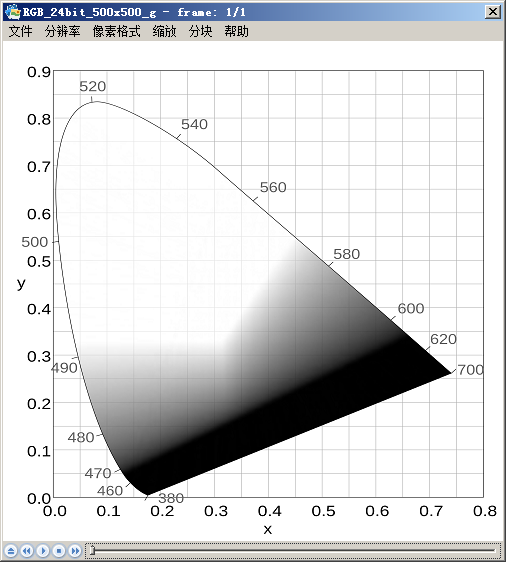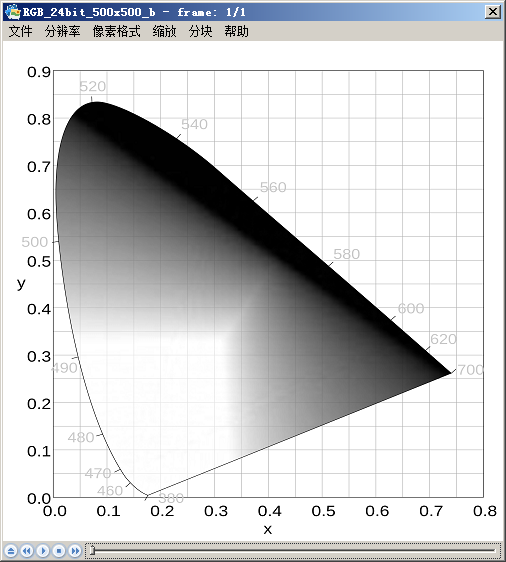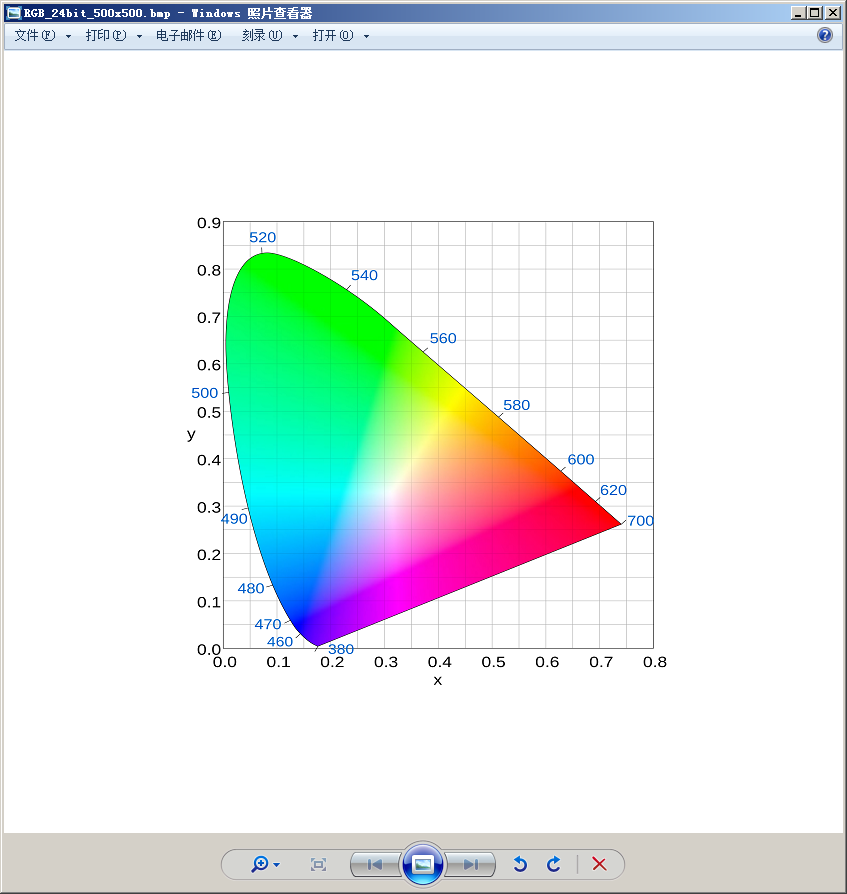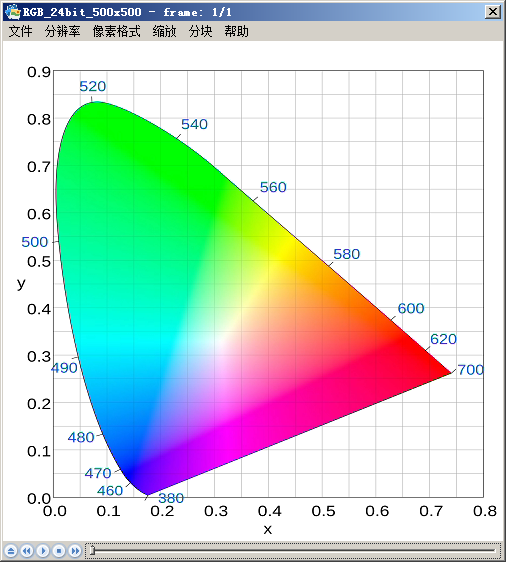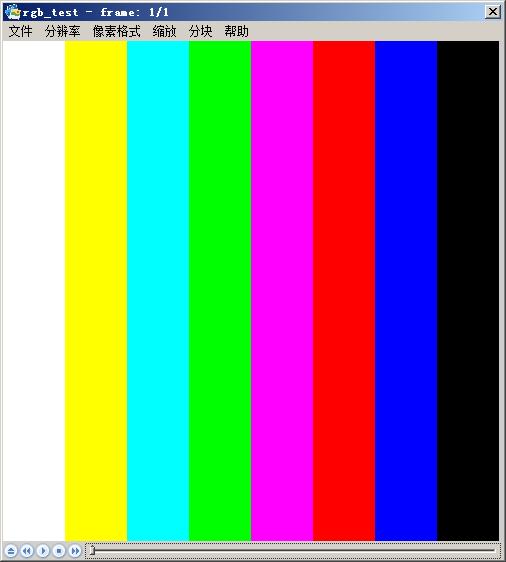1
2
3
4
5
6
7
8
9
10
11
12
13
14
15
16
17
18
19
20
21
22
23
24
25
26
27
28
29
30
31
32
33
34
35
36
37
38
39
40
41
42
43
44
45
46
47
48
49
50
51
52
53
54
55
56
57
58
59
60
61
62
63
64
65
66
67
68
69
70
71
72
73
| #include <stdio.h>
#include <stdlib.h>
unsigned char clip_value(unsigned char x,unsigned char min_val,unsigned char max_val){
if(x > max_val){
return max_val;
}else if(x<min_val){
return min_val;
}else{
return x;
}
}
void rgb_2_yuv420(int width, int height, int num){
FILE *fp_rgb = fopen("../source/RGB_24bit_500x500.rgb","rb");
FILE *fp_yuv = fopen("../source/RGB_24bit_500x500.yuv","wb");
unsigned char *pic_rgb24 = (unsigned char *)malloc(width * height * 3);
unsigned char *pic_yuv420 = (unsigned char *)malloc(width * height * 3 / 2);
for(int i=0;i<num;i++){
fread(pic_rgb24, 1, width * height * 3, fp_rgb);
unsigned char*ptrY, *ptrU, *ptrV, *ptrRGB;
for(int j = 0; j < width * height * 3 / 2; j++){
pic_yuv420[j] = 0;
}
ptrY = pic_yuv420;
ptrU = pic_yuv420 + width * height;
ptrV = ptrU + (width * height * 1 / 4);
unsigned char y, u, v, r, g, b;
for (int k = 0; k < height ; k++){
ptrRGB = pic_rgb24 + width * k * 3 ;
for (int l = 0; l < width; l++){
r = *(ptrRGB++);
g = *(ptrRGB++);
b = *(ptrRGB++);
y = (unsigned char)( ( 66 * r + 129 * g + 25 * b + 128) >> 8) + 16 ;
u = (unsigned char)( ( -38 * r - 74 * g + 112 * b + 128) >> 8) + 128 ;
v = (unsigned char)( ( 112 * r - 94 * g - 18 * b + 128) >> 8) + 128 ;
*(ptrY++) = clip_value(y, 0, 255);
if (k % 2 == 0 && l % 2 == 0){
*(ptrU++) = clip_value(u, 0, 255);
}
else{
if (l % 2 == 0){
*(ptrV++) = clip_value(v, 0, 255);
}
}
}
}
fwrite(pic_yuv420, 1, width * height * 3 / 2, fp_yuv);
}
free(pic_rgb24);
free(pic_yuv420);
fclose(fp_yuv);
fclose(fp_rgb);
}
int main(){
rgb_2_yuv420(500, 500, 1);//宽、高、帧数
return 0;
}
|
